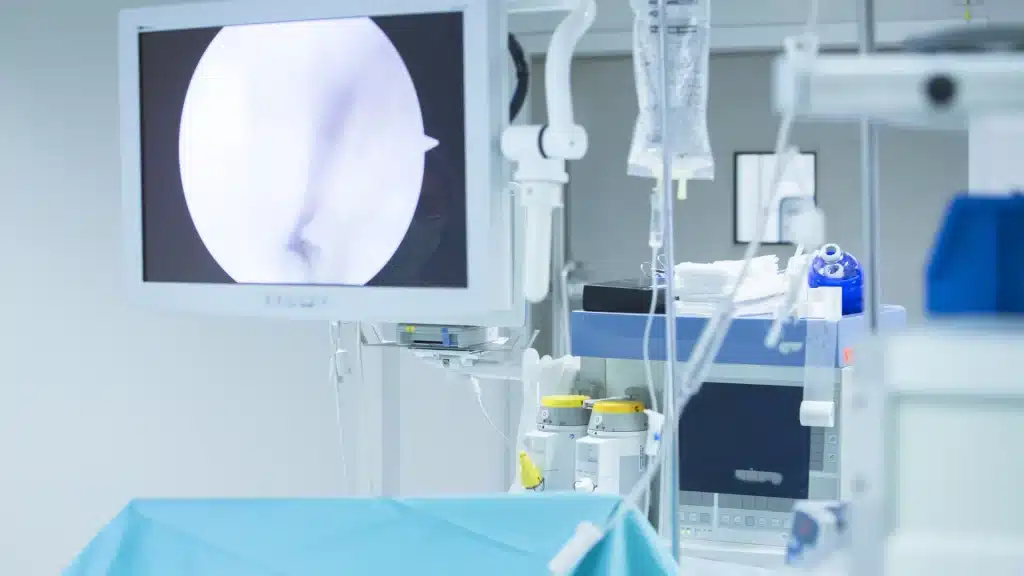Hip Arthroscopy: What It Is, Procedure and Benefits

Overview
Hip problems can affect anyone, from athletes to older individuals. For many, the discomfort or stiffness in the hip disrupts daily activities and reduces mobility. Hip arthroscopy has emerged as an effective way to treat various hip conditions without the need for large surgical cuts or procedures. It is gaining popularity due to minimal intervention.
What Is Hip Arthroscopy?
Hip arthroscopy is a small surgery done on the hip joint. It involves making small incisions around the hip joint and using a tiny camera, called an arthroscope, to see inside the joint. The surgeon identifies and treats various problems, such as torn cartilage, bone spurs, or inflammation in the joint lining. This approach to surgery eliminates the need for traditional open procedures, making recovery faster and with reduced discomfort.
Many younger patients, especially those active in sports like cricket or football, may experience hip injuries that affect their performance.
Older adults, particularly those with arthritis or wear-and-tear in the joint, also benefit from this procedure when other treatments like physiotherapy or medication fail to provide relief.
Common Indications
Hip arthroscopy helps to treat multiple conditions that impact the hip joint.
Femoroacetabular impingement (FAI), which occurs when extra bone growth in the joint causes pain or restricts movement is treated by this procedure.
Commonly also used to treat loose bodies of hip joints (small fragments of bone or cartilage).
Tears in the hip’s labrum, called labral tears caused by an external force on the hip can also be treated by arthroscopy.
Besides these, it can also be used for treating:
- Hip joint infection
- Tendon ruptures
- Sciatic nerve compression
- Osteochondritis dissecans
- Ligamentum teres injuries
- Iliopsoas bursitis
How Does the Procedure Work

A surgeon performs hip arthroscopy under general anaesthesia. During the surgery, the doctor makes two or three small cuts around the hip.
An arthroscope is inserted through one of these cuts, allowing the surgeon to view the joint on a screen.
Small surgical tools are used through the other incisions to repair the damaged tissue, shave down bone spurs, or remove loose fragments.
Since the procedure involves minimal disruption to surrounding tissues, recovery is typically quicker than with open surgery.
Recovery
Recovery from hip arthroscopy usually takes a few weeks, but it depends on the individual and the specific condition treated. In India, doctors often recommend physiotherapy as part of the recovery plan to help restore strength and mobility.
Patients should start using crutches to walk soon after surgery, and most will resume normal activities in six to eight weeks. However, activities like running or playing sports may take longer to recover from.
Estimated Cost in India
The cost of hip arthroscopy varies based on factors like hospital, surgeon, and the complexity of your condition. In metropolitan cities like Delhi, Mumbai, or Bengaluru, the procedure could range anywhere between Rs. 1,50,000 to Rs. 2,50,000, while smaller towns may provide it at cheaper rates.
Many hospitals in India provide cashless treatment options if you have health insurance, reducing the financial burden for patients.
Benefits
This minimally invasive operation provides several benefits:
- Smaller incisions lead to less scarring and reduced risk of infection compared to open hip surgery.
- Patients typically experience less post-operative pain, due to the minimally invasive nature of hip arthroscopy.
- Recovery from hip arthroscopy is generally faster, allowing patients to return to their daily activities sooner.
- Active individuals, such as athletes, can resume their training and compete without extended downtime.
- Enables early diagnosis of hip conditions, helping address issues more effectively in their initial stages.
- Future complications and the need for more extensive surgeries can be minimized.

Is Hip Arthroscopy Right for You?
Not everyone with hip pain will need surgery. In many cases, lifestyle changes, medication, or physiotherapy help manage symptoms. However, if your pain persists despite these measures, or if you have a structural issue in your hip, your doctor might recommend hip arthroscopy. Consultation with an orthopedic specialist is essential to determine whether this procedure is suitable for your condition.
Takeaways
Hip arthroscopy is an advanced and proven approach for treating hip-related conditions, and in India is becoming an increasingly popular solution that’s both quick and pain-free. By targeting the source of hip discomfort, this procedure helps improve the quality of life overall. If you are suffering from persistent hip discomfort, get a free consultation from HipXpert to determine whether hip arthroscopy could be right for you.
FAQs about Hip Arthroscopy
What is the typical recovery time for hip arthroscopy?
Recovery usually takes 6 to 8 weeks, but this varies depending on the individual and the condition treated. Physiotherapy provides faster recovery.
Will I need to stay in the hospital after the procedure?
It depends on the medical condition that you will have to stay same day or within 24 hours of the procedure. Hospitals in India often provide post-operative care plans to guide your recovery.
Is hip arthroscopy painful?
Patients may experience some trouble after the method, but the pain is generally achievable with prescribed medicines. Since it is minimally invasive, the pain is less compared to open surgery.
Can hip arthroscopy completely cure my hip problems?
While hip arthroscopy resolves many issues, the outcome depends on the underlying condition. For conditions like arthritis, it may alleviate symptoms but not cure the disease.
How much does physiotherapy cost after surgery in India?
Physiotherapy costs vary but generally range from ₹500 to ₹1,500 per session. Most patients require several sessions, depending on their recovery progress.
